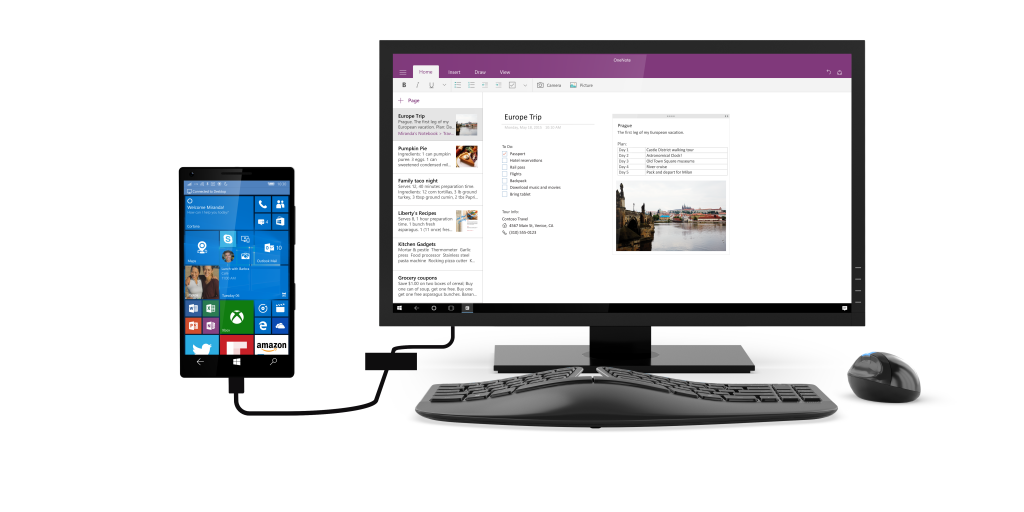On The Road Again, with Continuum
Tablets showed the industry that, compared to their phones, users also wanted larger form factors and well-designed applications that display more information. Despite running similar operating systems, tablets provided a unique method of interaction that had more value. Users now carry many devices because each device works best in a certain situation - typing documents on a laptop, streaming movies on a tablet, taking photos on a phone, and so on. All of these and more can be done on the same device, but we are limited by our methods of interaction, and so we seek out other devices.
In 2015 Microsoft announced Continuum for phone, allowing Windows 10 Mobile devices to push their UI to other form factors. Now we can extend the spectrum of interaction our phones provide and take advantage of their power in many more ways. Some types of devices cannot be replaced because they are required to perform a certain task, but as we see the consumer industry defining more form-factor focused devices, features like Continuum will be an invaluable technology.
The importance of Continuum lies in understanding the mobility it provides and its coexistence with our current platforms and infrastructure. There's still only a few supported phones, but traditional computer peripherals, the universal app platform, remote desktop capabilities, "extenders", all play into being more mobile.
I'll be using this blog as a place to discuss all things Continuum-related (devices, feature updates, use-cases, and so on). I absolutely welcome any and all feature requests, in the overall effort to make obvious just how much Continuum can do.
